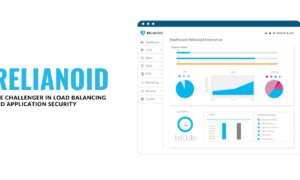With the increasing number of cyber threats, protecting applications from potential attacks is essential to safeguard sensitive data and maintain user trust. One of the most effective ways to enhance application security is through penetration testing. This blog will explore how penetration testing can improve application security and provide strategies to implement it effectively.
Understanding Application Security
Application security involves measures taken to protect applications from threats and vulnerabilities throughout their lifecycle. As applications become more complex, they face various security challenges, such as SQL injection, cross-site scripting (XSS), and unauthorized access. These vulnerabilities can lead to data breaches, financial loss, and damage to an organization’s reputation. Implementing robust security measures is crucial to prevent these incidents and ensure the safety of both the application and its users.
What is Penetration Testing?
Penetration testing, also known as ethical hacking, is a proactive security assessment technique where experts simulate real-world attacks on an application to identify vulnerabilities. The primary objective is to find and fix security weaknesses before malicious actors can exploit them. There are different types of penetration testing:
- Black-box testing: Testers have no prior knowledge of the system, simulating an external attack.
- White-box testing: Testers have full access to the system’s internal information, simulating an internal attack.
- Grey-box testing: Testers have partial knowledge of the system, combining elements of both black-box and white-box testing.
By replicating potential attack scenarios, penetration testing helps uncover security flaws that might not be detected through regular security measures.
How Penetration Testing Enhances Application Security
Penetration testing significantly boosts application security by:
- Identifying and addressing security flaws: Penetration tests reveal vulnerabilities that could be exploited by attackers, allowing developers to fix these issues before they become a threat.
- Providing insights into existing security measures: Testing helps assess the effectiveness of current security protocols, identifying areas that need improvement.
- Enhancing overall security posture: Regular penetration testing ensures that applications remain resilient against evolving threats, maintaining a robust security stance.
Penetration Testing Strategies for Improving Application Security
To maximize the benefits of penetration testing, organizations should adopt the following strategies:
- Regularly scheduled penetration tests: Conducting regular tests helps maintain a proactive security approach, ensuring new vulnerabilities are promptly identified and addressed.
- Integrating penetration testing into the software development lifecycle (SDLC): Incorporating security testing at various stages of development ensures vulnerabilities are detected early, reducing the risk of costly fixes later on.
- Utilizing both automated tools and manual testing: Combining automated scanning tools with manual testing provides a comprehensive security assessment, leveraging the strengths of both methods for thorough vulnerability detection.
Tools and Techniques for Effective Penetration Testing
Effective penetration testing relies on using the right tools and techniques. Some popular penetration testing tools include:
- Metasploit: A widely-used framework for developing and executing exploit code against a remote target machine.
- Burp Suite: A powerful tool for web application security testing, offering a range of features for scanning and exploiting vulnerabilities.
- Nmap: A network scanning tool that helps identify open ports, services, and potential security issues.
Keeping these tools updated and utilizing the latest techniques ensures that penetration tests remain relevant and effective. Combining multiple tools and techniques can provide a more thorough assessment, uncovering vulnerabilities that might be missed by a single tool.
Best Practices for Implementing Penetration Testing
To effectively implement penetration testing, organizations should follow these best practices:
- Establish clear goals and objectives: Define the scope and purpose of the penetration test to ensure it aligns with the organization’s security needs.
- Ensure collaboration between development and security teams: Foster communication and cooperation between teams to address security issues promptly and efficiently.
- Act on penetration test results: Use the findings from penetration tests to prioritize and fix identified vulnerabilities, continuously improving the application’s security.
Conclusion
In conclusion, improving application security through penetration testing is essential for protecting sensitive data and maintaining user trust. By identifying and addressing vulnerabilities, penetration testing enhances the overall security posture of applications. Adopting strategies such as regular testing, integrating security into the SDLC, and using a combination of tools and techniques can significantly bolster application security. Organizations must maintain a proactive approach to security, continually assessing and improving their defenses to stay ahead of evolving threats.



































